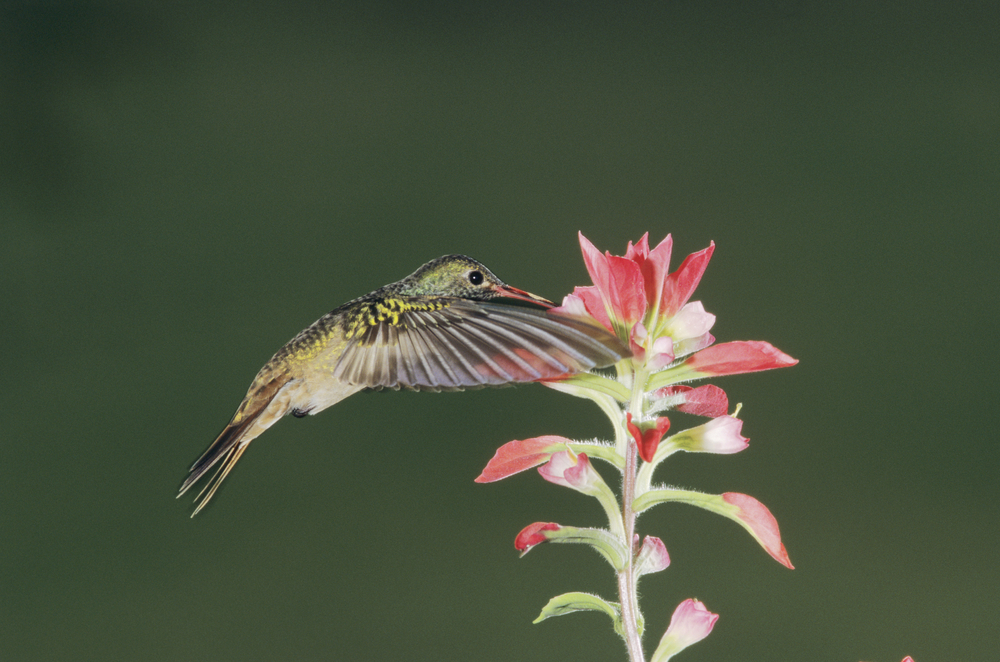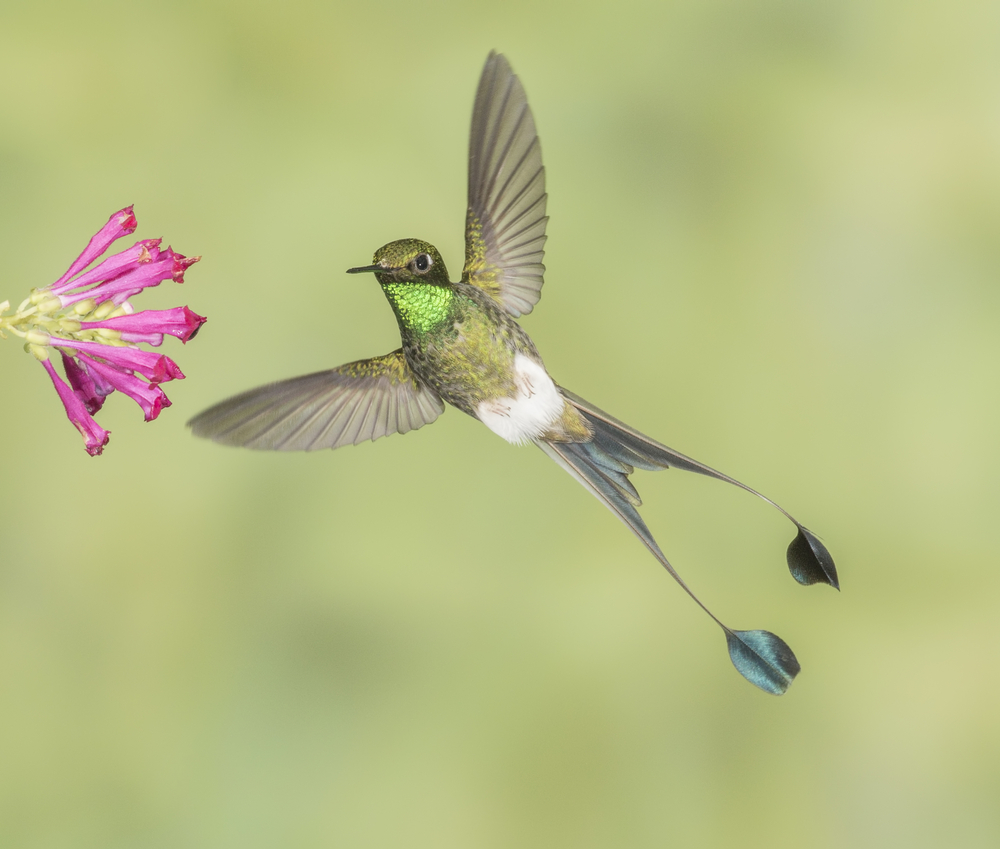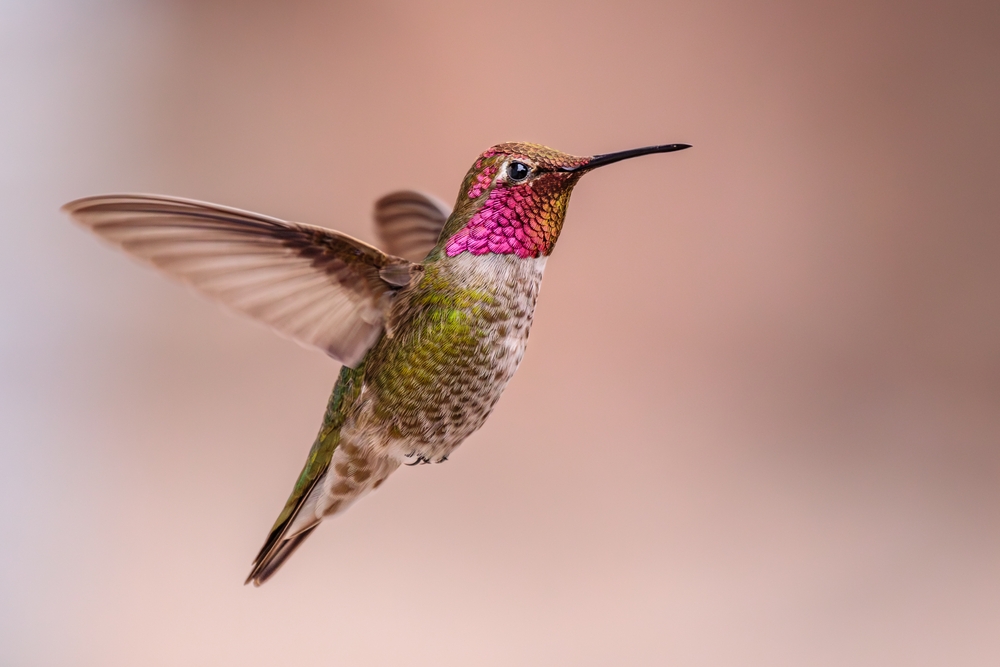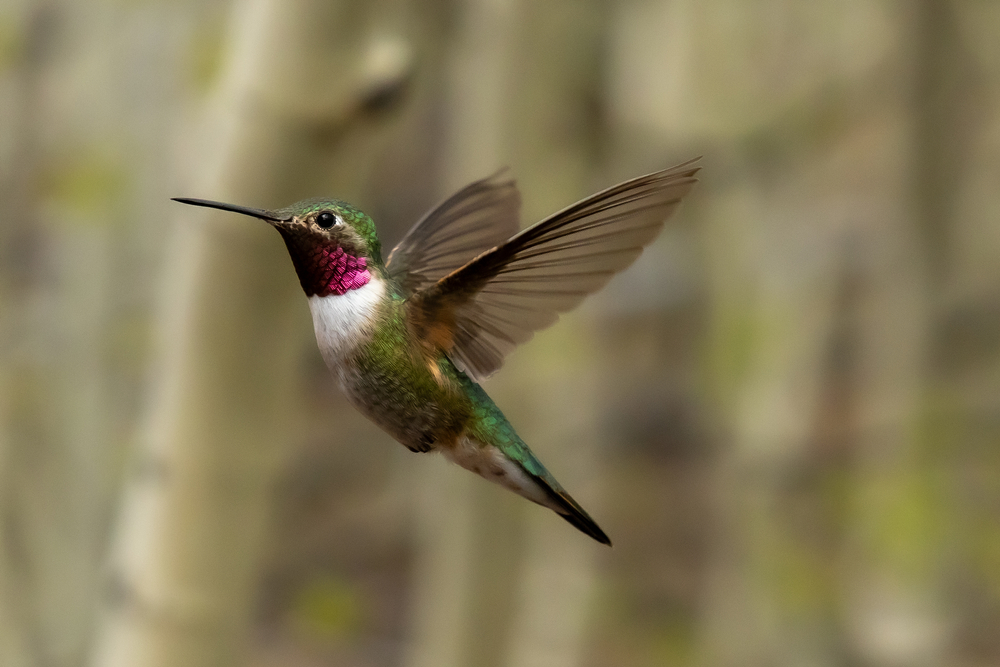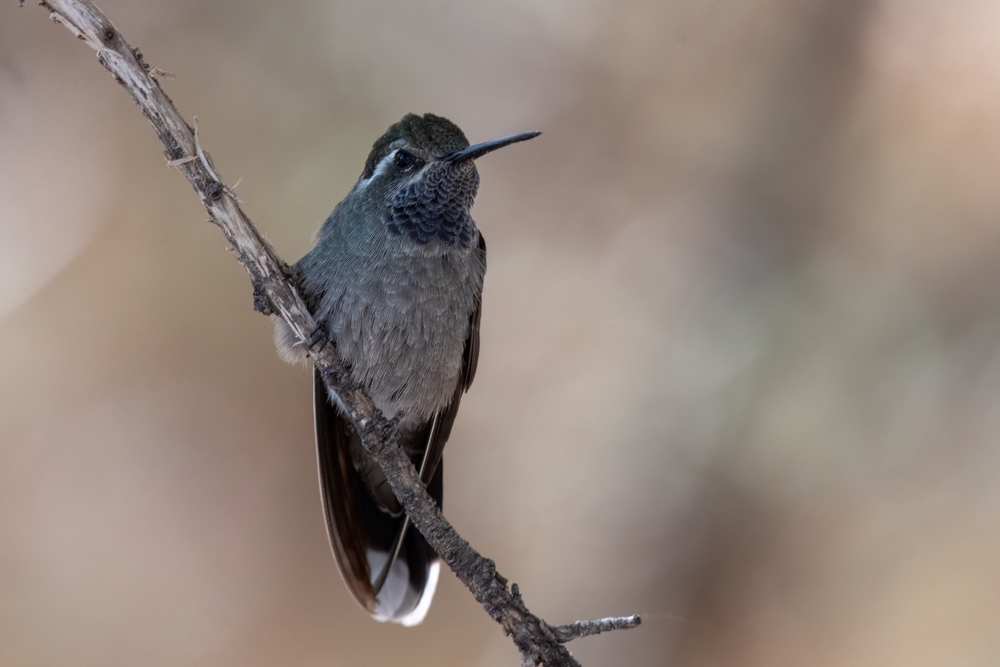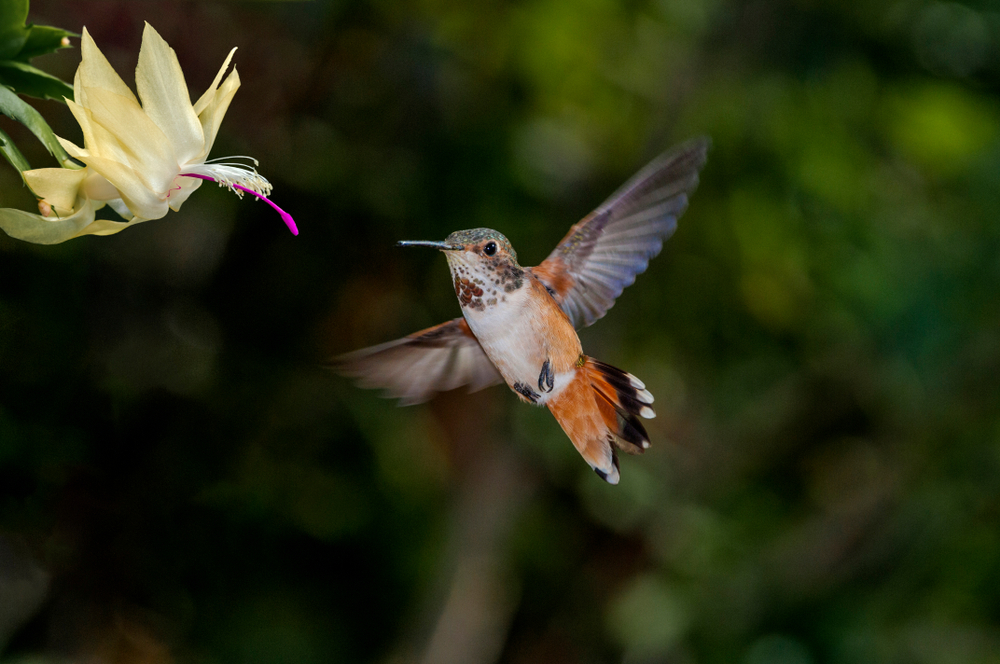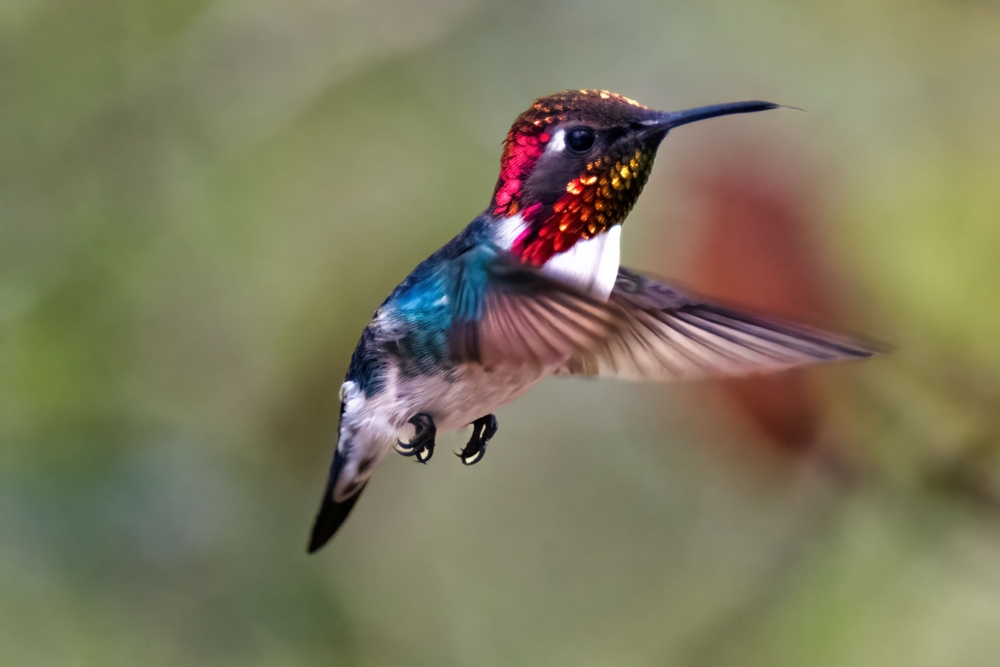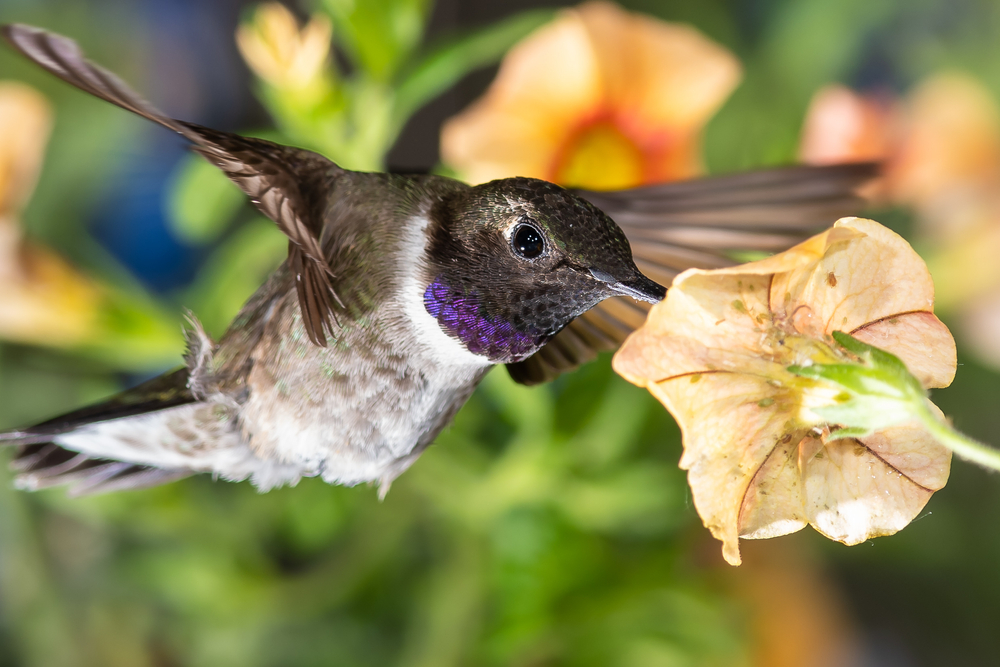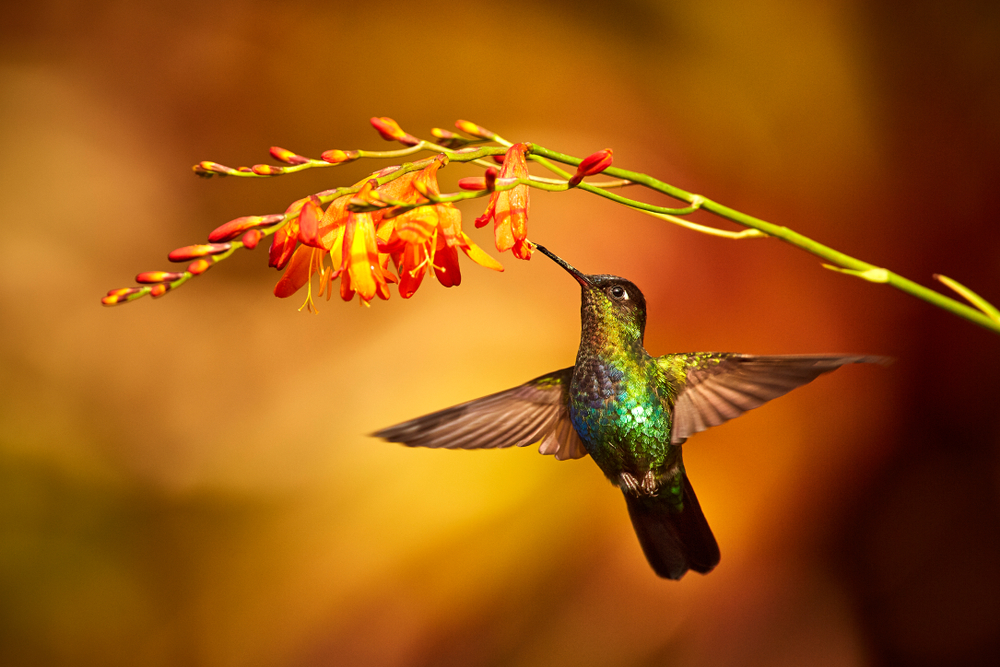The Buff-bellied Hummingbird (Amazilia yucatanensis) is closely related to other members of the Amazilia group, especially the Cinnamon Hummingbird (Amazilia rutila) and Rufous-tailed Hummingbird (Amazilia tzacatl), which share similar size, coloration, and behavior.
About
The Buff-bellied Hummingbird (Amazilia yucatanensis) is a medium-sized member of the family Trochilidae, found in the southern United States, eastern Mexico, and Central America. In the U.S., it is most often seen along the Gulf Coast of Texas, where it is one of the few hummingbirds to overwinter. Its tolerance of both natural and suburban habitats, including gardens with flowering plants and feeders, makes it a familiar species in some regions.
Measuring about 9–11 cm (3.5–4.3 in) in length and weighing 3–4 grams, the Buff-bellied Hummingbird is larger than many other North American hummingbirds. Its plumage is a shimmering mix of metallic green on the back and chest, a rufous-colored tail, and a buffy wash across the belly that gives the species its name. It also has a slightly decurved, reddish bill tipped with black, which adds to its distinctive appearance.
The Buff-bellied Hummingbird feeds on nectar from a wide variety of flowering plants, both wild and cultivated, and is a frequent visitor to hummingbird feeders. It supplements its diet with insects and spiders, providing essential protein. Known for being bold and somewhat aggressive, it often dominates feeding territories, chasing away smaller hummingbirds.
Breeding typically occurs from spring through summer. The female alone constructs a small cup-shaped nest made of plant fibers, moss, and spider silk, usually attached to a tree or shrub branch. She lays two tiny white eggs and provides all parental care, from incubation to feeding the young until they fledge.
While not considered threatened, the Buff-bellied Hummingbird depends on healthy woodland edges, scrub, and gardens rich in nectar plants. Its year-round presence in parts of its range, colorful plumage, and assertive behavior make it a memorable sight for bird enthusiasts.
Physical Characteristics
Plumage:
The Buff-bellied Hummingbird (Amazilia yucatanensis) is a medium-sized, brightly colored hummingbird.
-
Males and Females: Both sexes are similar, with a metallic green head, throat, and back, a rufous-buff belly and flanks, and a contrasting rufous tail with bronzy-green tones near the base.
-
The throat and chest glow iridescent emerald in sunlight, while the belly and undertail coverts show warm cinnamon or buff hues, giving the bird its name.
Head:
The head shines metallic green, with a straight, reddish bill tipped in black—a distinctive feature compared to many other hummingbirds. The eyes are dark, set against the gleaming green face.
Body:
Stocky and medium-sized compared to other North American hummingbirds, with warm buff underparts contrasting sharply against the green upperparts.
Size:
-
Length: 3.9–4.3 in (10–11 cm)
-
Wingspan: About 5 in (12–13 cm)
-
Weight: 0.11–0.17 oz (3–5 g)
Feet & Tail:
Tiny feet used only for perching. The tail is relatively long, rufous with green bases, often fanned and flashing rufous when defending territories.
Flight Style:
Wingbeats are rapid (~50–55 per second), producing the characteristic humming sound. They are strong, agile fliers and often aggressive when chasing intruders from flower patches or feeders.
The Buff-bellied Hummingbird’s emerald-green upperparts, cinnamon belly, rufous tail, and red-tipped bill make it one of the most colorful and distinctive hummingbirds in southern Texas, Mexico, and Central America.
Reproduction
Breeding Season:
Buff-bellied Hummingbirds breed primarily in the spring and summer months (March to August) in Texas and northeastern Mexico, though in tropical regions nesting may occur over a longer season depending on flower availability.
Courtship:
-
Males defend small feeding territories and perform hovering displays, showing off their shimmering green plumage, rufous tail, and reddish bill.
-
Aggressive chases and aerial pursuits are common in both courtship and territory defense.
-
As in most hummingbirds, the male does not assist with nesting or raising the young.
Nesting:
-
The female alone builds the nest, usually 3–10 ft (1–3 m) high in shrubs, small trees, or sometimes in vines near open areas.
-
Nests are tiny cups (about 1.5 in / 4 cm across), constructed from plant down, moss, and spider silk, camouflaged with lichens and bark flakes.
-
The stretchy spider silk allows the nest to expand as chicks grow.
Eggs:
-
A clutch usually contains 2 small white eggs, each about the size of a pea (0.5 in / 1.3 cm long).
Incubation:
-
Lasts about 14 to 16 days.
-
The female is solely responsible for incubation.
Chick Development:
-
Hatchlings are altricial (blind, featherless, and helpless).
-
The female feeds them regurgitated nectar and small insects for protein.
-
Fledging occurs at about 20 to 23 days, though young may remain with the female for another week or two.
Maturity:
-
Juveniles quickly learn to forage independently.
-
Sexual maturity is typically reached at about 1 year of age, allowing them to breed the following season.
The Buff-bellied Hummingbird’s reproduction highlights the classic hummingbird strategy: male courtship displays, female-only nesting, and rapid chick development tied closely to flowering cycles.
Lifespan
In the Wild:
Buff-bellied Hummingbirds typically live 4 to 6 years in their native range of southern Texas, Mexico, and Central America. As with most hummingbirds, survival rates are lowest in the first year due to predation and environmental hazards.
In Captivity:
In protected settings such as rehabilitation or research, individuals may live longer, sometimes reaching 8 to 9 years, though captivity is rare for this species.
Record Lifespan:
The oldest known Buff-bellied Hummingbird on record lived just over 11 years, documented through banding studies—a remarkable age for such a small bird.
Threats to Longevity:
-
Predation: Vulnerable to hawks, snakes, spiders, and domestic cats.
-
Habitat Loss: Deforestation and conversion of native scrub and woodland reduce nectar sources and nesting areas.
-
Collisions: Strikes with windows and vehicles are common threats, especially near human settlements.
-
Competition: Other hummingbirds (e.g., Ruby-throated or Black-chinned) may outcompete them for food resources in shared ranges.
Despite these threats, Buff-bellied Hummingbirds are resilient and adaptable, often thriving in gardens and suburban areas with feeders and flowering plants.
Eating Habits
Diet:
The Buff-bellied Hummingbird is an omnivorous nectar specialist with a varied diet:
-
Nectar: Primary food source, taken from tubular flowers such as trumpet creeper, coral bean, and salvias.
-
Insects & Spiders: Small flies, gnats, ants, and spiderlings provide protein, especially during the breeding season for chicks.
-
Sap: Occasionally feeds at sap wells drilled by sapsuckers, also catching insects trapped in the sap.
Foraging Behavior:
-
Hovers in front of flowers, using its long extendable tongue to lap up nectar at high speed (10–13 licks per second).
-
Males are highly territorial, defending patches of flowers and feeders aggressively with chases and aerial displays.
-
Females forage more widely when nesting, often taking advantage of both natural blooms and human-provided feeders.
-
Frequently supplements its diet with insects caught midair (hawking) or plucked from foliage and spider webs.
Feeding Adaptations:
-
Straight reddish bill tipped in black is specialized for accessing tubular flowers.
-
Enters torpor at night to conserve energy, lowering its metabolic rate.
-
Excellent memory allows it to track the replenishment cycles of flowers within its territory.
Role in Ecosystem:
As a pollinator, the Buff-bellied Hummingbird plays an important role in maintaining the reproductive cycles of native plants. Its insect hunting also helps regulate small insect populations.
The Buff-bellied Hummingbird’s versatile feeding habits, aggressive territoriality, and ecological role as a pollinatormake it a key hummingbird of southern Texas and tropical forests of Mexico and Central America.
Uniqueness
Reddish Bill with Black Tip:
One of the easiest field marks is its distinctive two-toned bill—reddish at the base and black at the tip—unlike most hummingbirds with all-dark bills.
Buff Underside & Rufous Tail:
It is the only regularly occurring hummingbird in the U.S. with a warm buff belly and rufous tail, a striking contrast to the metallic green back.
Aggressive Territoriality:
Buff-bellied Hummingbirds are notoriously bold and aggressive, often chasing away not only other hummingbirds but also larger birds from feeders and flower patches.
Range Expansion:
While primarily tropical, it is the only hummingbird to regularly breed in the U.S. Gulf Coast (Texas). In recent years, it has expanded its range northward, showing unusual adaptability.
Seasonal Diet Flexibility:
Unlike many hummingbirds that rely almost exclusively on nectar, this species feeds heavily on insects, spiders, and even tree sap, making it one of the more versatile hummingbirds in its range.
Ecosystem Role:
By feeding at flowers, sap wells, and catching insects, it serves as both a pollinator and insect controller, impacting multiple layers of the ecosystem.
The Buff-bellied Hummingbird’s unique coloration, aggressive behavior, and adaptability across tropical and subtropical habitats make it one of the most distinctive hummingbirds in North America.
Be the First to Share Photos of This Species.
FAQ’s
1. What is the closest species to the Buff-bellied Hummingbird?
2. How does the Buff-bellied Hummingbird compare to other hummingbirds?
Unlike many hummingbirds that are primarily nectar-dependent, the Buff-bellied is highly versatile, feeding not only on nectar but also heavily on insects, spiders, and even sap. It is also larger and bolder than most U.S. hummingbirds, often dominating feeders.
3. What national parks provide the best opportunities to see a Buff-bellied Hummingbird?
In the United States, the best place to see them is Laguna Atascosa National Wildlife Refuge (Texas). In Mexico, they are common in Sian Ka’an Biosphere Reserve and Calakmul Biosphere Reserve, where they thrive in tropical forests and scrublands.



































































